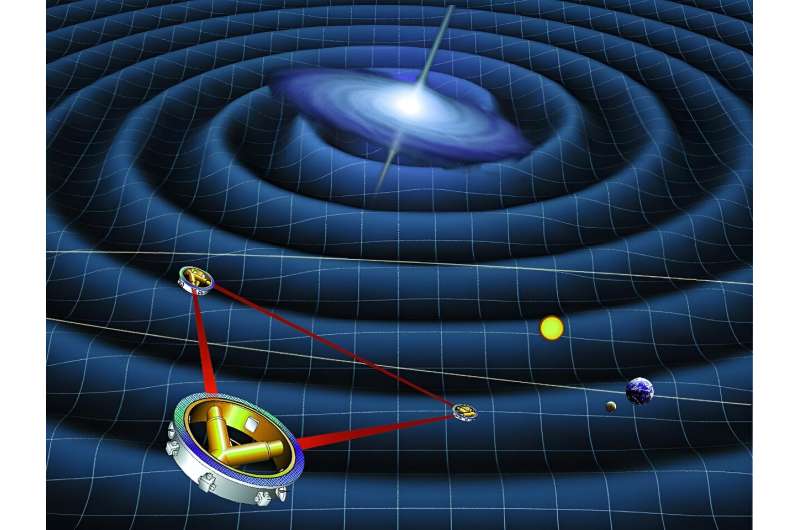The concept of interferometry makes use of the wave property of light. The signal from independent receivers (be they optical or other wavelengths) are combined and superimposed and from this, synthetically represent the resolution of a telescope equivalent to the distance between the two receivers. The real challenge with this technique is that the receivers must be very accurately positioned.
Currently one of the largest interferometers on Earth is ALMA, the Atacama Large Millimeter Array which as its name suggests observes the sky in millimeter wavelengths. It can extend out its receivers to 16km but it is dwarfed by the Event Horizon telescope which is an international initiative to create a global-sized radio telescope interferometer. That's as far as we can go though, the Earth is simply going to limit their size, the solution—put them in space.
Space-based interferometers carry further challenges. Put a telescope down on Earth and it generally stays there but try and put a telescope in space and well, it's going to take some serious engineering (which we don't currently have) to keep them in a stable and precise position. Engineering challenges aside, where do you put them?
Ito's paper, accepted for publication in Astronomy & Astrophysics, takes a look at the possible orbits that the interferometers might be put in and concludes that maintaining precise positioning in geocentric (Earth-centered) orbit is achievable.
In orbiting Earth there are effects, for example, the gravitational effect of the sun and moon, that can perturb objects in orbit. The study went on to show that higher-altitude orbits seemed to have smaller disturbances when compared with lower-altitude orbits. Regardless, with the right technology it should be possible to mitigate these disturbances to facilitate precise control of space based interferometers.
More information: Takahiro Ito, Formation-Flying Interferometry in Geocentric Orbits, arXiv (2023). DOI: 10.48550/arxiv.2311.10970
Journal information:Astronomy & Astrophysics, arXiv
Provided by Universe Today



